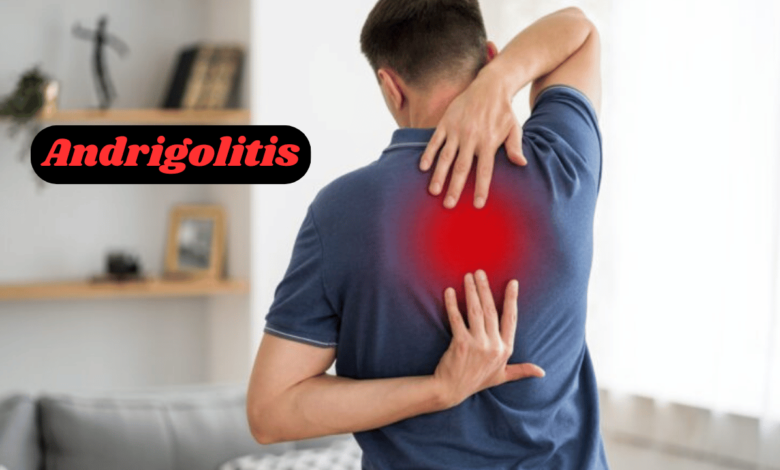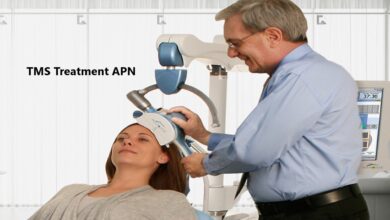Andrigolitis: Symptoms, Diagnosis, Treatment, and Management

Andrigolitis is a rare and complex inflammatory condition affecting joints and muscles, causing severe pain and discomfort. Although relatively uncommon, it can significantly impact the quality of life for those affected. This piece thoroughly summarizes andrigolitis, including its symptoms, causes, diagnostic methods, treatment options, and management strategies.
What is Andrigolitis?
Andrigolitis is an inflammatory condition characterized by persistent inflammation of the joints and muscles. The term “andrigolitis” is derived from Greek, with “andro” meaning “man” and “itis” indicating inflammation. This condition primarily affects adults aged 30 to 50, with a slightly higher prevalence in men than women.
Symptoms of Andrigolitis
Early Symptoms
Identifying andrigolitis in its early stages can be challenging due to its nonspecific symptoms. Typical early signs include:
- Joint discomfort and stiffness
- Muscle pain
- Fatigue
- Occasional swelling around the andrigolus gland
Advanced Symptoms
The illness worsens, causing symptoms to intensify and persistent, including:
- Chronic pain in the affected areas
- Severe stiffness
- Swelling and inflammation
- Fever
- Weight loss
- General malaise
Due to these symptoms’ substantial impact on day-to-day activity, tasks such as walking, lifting objects, or typing are arduous.
Causes and Triggers of Andrigolitis
Genetic Factors
Research suggests that genetic predispositions play a crucial role in developing andrigolitis. Individuals with a family history of autoimmune diseases are more likely to become afflicted with the illness.
Environmental and Lifestyle Factors
Environmental elements, such as being around specific chemicals or infectious agents, and lifestyle factors, including stress and a lousy diet combined with inactivity, can lead to or exacerbate the symptoms of andrigolitis.
Autoimmune Response
Andrigolitis is believed to involve an abnormal autoimmune response, where the body’s immune system mistakenly attacks its tissues, leading to inflammation and damage to the joints and muscles.
Diagnosing Andrigolitis
Initial Consultation
The diagnostic process for andrigolitis typically begins with a thorough medical history and physical examination. Healthcare providers assess the patient’s symptoms and look for inflammation and joint involvementsigns.
Diagnostic Tests
Several diagnostic tests are used to confirm a diagnosis of andrigolitis, including:
- Blood Tests: To detect indicators of inflammation and autoimmune activity.
- Imaging Studies: MRI, CT scans, and X-rays provide detailed views of the affected areas, helping to visualize glandular inflammation and assess tissue involvement.
- Differential Diagnosis: It’s critical to exclude alternative illnesses like rheumatoid arthritis with comparable symptoms, lupus, and fibromyalgia.
Treatment Options for Andrigolitis

Medications
Medications are often the first line of defense in treating andrigolitis. Commonly prescribed medications include:
- Nonsteroidal Anti-Inflammatory Drugs (NSAIDs): To reduce pain and inflammation.
- Corticosteroids are used in more severe cases to suppress the immune response and effectively reduce inflammation.
- Disease-Modifying Antirheumatic Drugs (DMARDs): For patients with severe symptoms that do not respond to NSAIDs or corticosteroids.
Physical Medicine
One of the most critical aspects of managing andrigolitis is implementing tailored exercise programs. These programs can improve mobility, strengthen muscles, and alleviate pain. Working with a professional therapist ensures that exercises are performed correctly and safely.
Lifestyle Changes
Adopting a healthier lifestyle can significantly help in managing andrigolitis. Recommended changes include:
- Balanced Diet: Eating many foods high in anti-inflammatory components can aid in controlling symptoms.
- Regular Physical Activity: Customized exercise routines can improve well-being and reduce symptoms.
- Stress-reduction methods: Asanas, meditation, and tai chi can help manage stress, which may, in turn, alleviate symptoms.
Alternative Therapies
Some patients find relief through alternative therapies, including:
- Acupuncture: The insertion of tiny needles into particular bodily locations to reduce pain and improve mobility.
- Herbal Remedies: Supplements such as turmeric, ginger, and Boswellia are known for their anti-inflammatory properties.
Emerging Therapies
Emerging therapeutic approaches targeting specific immune pathways implicated in glandular inflammation show promise. Biologic therapies, such as monoclonal antibodies targeting cytokines or immune cell receptors, are under investigation due to their capacity to alter the immunological response and reduce inflammatory activity within the andrigolus gland.
Managing Andrigolitis
Building a Support Network
Living with a chronic condition like andrigolitis can be isolating. Building a support network of family, friends, and healthcare professionals is essential for emotional and practical assistance.
Stress Management
Stress can exacerbate symptoms of andrigolitis. Stress management methods include progressive muscular relaxation, mindfulness meditation, and deep breathing techniques, which can improve overall well-being.
Pacing and Planning
Learning to pace yourself and plan activities can help manage energy levels and reduce the risk of overexertion. Dividing work into more manageable chunks and providing rest periods can make daily activities more achievable.
Regular Follow-Ups
Regular follow-ups with healthcare providers are crucial for monitoring the progression of andrigolitis and adjusting treatment plans as needed. These appointments provide an opportunity to discuss any new symptoms or concerns .
Future Research and Directions
They divide work into more manageable chunks and provide genetic predispositions and potential triggers of andrigolitis. Advances in diagnostic technologies and biomarker identification hold promise for improving early detection and enhancing treatment outcomes. Collaborative research initiatives and multicenter clinical trials are essential for evaluating the safety, efficacy, and long-term consequencesof emerging therapeutic strategies.
Conclusion
Due to its rarity, nonspecific symptoms, and complex pathophysiology, andrigolitis presents unique diagnostic and treatment challenges. To maximize patient care and enhance treatment outcomes, a comprehensive approach involving advanced imaging techniques, interdisciplinary collaboration among healthcare specialists, and emerging therapeutic strategies is necessary. By raising awareness, funding ongoing research, and embracing proactive healthcare practices, the medical community can significantly improve living standards for those impacted by this rare and complex condition.
You May Also Read: Õygen: Unraveling Its Multifaceted Significance




